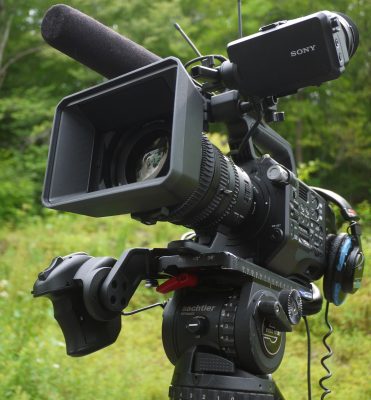Believe the Hype: HDR Is the Real Deal
By Jim Bask
 Replicating what the human eye can see has been the main goal from cinematographers and filmmakers for years. As the technology grows and cameras get better the images from these devices are clearer and closer to what we as humans actually see. Barry Baverman from StudioDaily in this article shows how HDR advances have made their way into our lives and homes. With how cameras are designed to capture more and be more versatile, the same can be said about the television displays we watch all of our entertainment. Seeing how the resolutions now look so great, imagine what the images in five years will look like.
Replicating what the human eye can see has been the main goal from cinematographers and filmmakers for years. As the technology grows and cameras get better the images from these devices are clearer and closer to what we as humans actually see. Barry Baverman from StudioDaily in this article shows how HDR advances have made their way into our lives and homes. With how cameras are designed to capture more and be more versatile, the same can be said about the television displays we watch all of our entertainment. Seeing how the resolutions now look so great, imagine what the images in five years will look like.
With many cameras offering log recording and 14+ stops of dynamic range, the arrival of HDR consumer TVs has major implications for shooters; the robustly textured highlights we so diligently capture and fret over on set can now finally be integrated into the final grade. It’s not all peaches and cream given the limitations (still) of the latest HDR displays, but the vastly improved highlights reproducible on an ever-increasing number of sets is a cause for serious celebration.
If some veteran shooters harbor an anti-HDR bias, that’s understandable. It’s hard to forget the dreadful Red implementation from a decade ago that utilized a crude form of bracketing with multiple frame exposures. This technique of merged data sets and blending of frames may have worked okay for still photography (the iPhone is an excellent case in point) but it worked horribly for motion video applications, especially at night — shooting fireworks displays, for example. Suffice it to say, the blurring inside the frame and softening of the image only got worse after compression downstream over IP or cable.
By the year 2000, electronic cameras had improved and could capture over 10 stops of latitude with enhanced highlight control and tonality. The Panasonic VariCam, introduced in 2004, employed a clever, low-contrast Film-Rec curve to expand dynamic range. The camera, amazing for its time, offered a stunning 10.8 stops of latitude and 1500:1 dynamic range in Film-Rec mode.
For shooters of broadcast and cable television, HDR is transforming how the public views our images. To be effective, HDR requires at least 12 stops of latitude in-camera. Fortunately, most modern cameras are capable of this or more. One small problem remains, however: most HDR TVs can display only 10 to 11 stops (at 500-600 nits), so some clipping of highlights may still occur even on the latest-generation HDR displays…..[continue reading]

